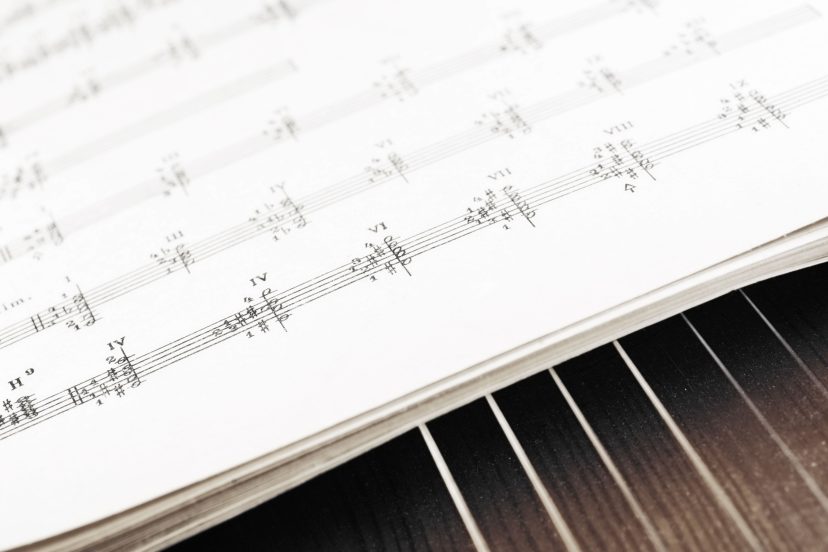Bass Music Theory: Harmonize Your Play
Intro Bass Music Theory
The bass clef, the cornerstone of all things bass, is the heartbeat of many musical pieces, providing the steady rhythm and harmony. Understanding the bass clef and bass music theory isn’t just about learning to read music. It’s about connecting with your instrument, learning the language of music, and opening up a world of creative possibilities. Let’s explore the exciting world of bass music theory.
The Foundation: Understanding the Basics of Bass Clef
Plunging into the essence of bass music theory, we find the bass clef – a fundamental musical notation that signifies the deeper range of notes, ideally suited for the bass. Also known as the F-clef, it is identified by the positioning of two dots that straddle the fourth line from the bottom, pinpointing the note F. Gaining knowledge of how to read bass clef is like mastering the first chapter of your bass music theory book, equipping you with the power to interpret written music and bring it alive with the vibrant, full-bodied notes of your bass. This is where your journey starts, forming the bedrock upon which all the other aspects of bass music theory rest.
This initial understanding of the bass clef lays the ground for your ongoing musical expedition, paving the way for you to explore scales, harmony, chord progressions, rhythm, timing, and improvisation. But remember, this is just the beginning, and there’s a lot more exciting terrain to cover on your journey towards mastering bass music theory.
Music Scales: The Building Blocks of Bass Lines
Music scales are the backbone of any bass line, functioning as a navigation tool for composing harmonies and melodies. Be it the soulful tones of a major scale or the sharper notes of a minor scale, each scale brings a different color palette to your music, helping to define its emotional tone and mood. Familiarizing yourself with scales enhances both your technical precision and your aural skills. It empowers you to identify and reproduce musical patterns, fostering a keen understanding of how different notes relate to each other.
And it’s not just about knowing the scales, but about practicing them routinely, treating each note as an integral part of the overall sound. This understanding of scales forms a crucial layer in your bass music theory knowledge, one that supports your journey into the intricate realms of chord progressions, rhythm, timing, and eventually, improvisation. So, immerse yourself in the world of scales, and watch as your bass lines transform from simple note sequences into powerful musical expressions.
Harmony and Chord Progression: The Soul of the Music
Picture this: you’re at the core of a musical composition where your bass notes play a pivotal role in determining the chords resonating in the piece. This is where you, as a bass player, bring harmony to life, adding depth and dimension to the song. Understanding chord progressions, those series of musical chords that evolve over time, is akin to reading a captivating story with its twists and turns. Each chord progression you master adds a unique flavor, creating a distinctive sound that can shift the mood of a piece or take the listener on an unexpected journey.
As you dive deeper into the language of harmony and progression, you’ll begin to see how the bass clef, in all its understated power, gives you the ability to shape the song’s structure, infuse emotion and orchestrate the harmonic heartbeat of the music. This exploration of chord progressions not only contributes to the richness of your bass lines but also unlocks a deeper level of musical interpretation. Embrace this understanding and see how it fuels your creative expression, letting you paint aural landscapes that tell the soulful story of your music.

Exploring Rhythm and Timing: The Heartbeat of Bass Playing
Think of rhythm and timing as the rhythmic pulse of a piece, a heartbeat that brings life to the music. As a bass player, your role is critical in establishing this pulse, providing the consistent beat that propels the music forward. Whether it’s pounding out straightforward quarter notes or weaving complex syncopated patterns, the bass player must remain tightly synchronized with the beat.
Improving your understanding of rhythm and timing is more than just metronomic precision. It’s about feeling the groove of the song, sensing when to lay back, when to push ahead, and when to hold steady. It’s about the interplay between the steady rhythm of the bass and the melodic movements of the other instruments.
A solid grasp of rhythm and timing sets the stage for you to explore different grooves, allowing you to bring a distinctive feel to each piece you play. It enables you to create a synergy with other musicians, building a dynamic interplay that breathes life into the music. As you delve deeper into the world of rhythm and timing, you’ll uncover the profound impact it has on the overall vibe and groove of the song. So, invest time in understanding rhythm and timing, and experience how it infuses your bass playing with a rhythmic heartbeat that drives the music forward.
The Art of Improvisation: Using Theory to Create
Where rhythm meets melody, where scales merge with chords, and where understanding gives way to intuition – this is the thrilling realm of improvisation. It’s in this space that bass music theory becomes the spark that ignites your creativity. With a solid grounding in music theory, you’re free to explore and invent, to experiment with different note combinations, progressions, and rhythmic patterns. Improvisation is a celebration of spontaneity and creativity, where you get to play composer and performer simultaneously. It’s a chance to put your personal touch on every song, leaving an indelible mark of your unique musical style. But remember, improvisation isn’t about throwing theory out the window. Rather, it’s about using theory as a launchpad, propelling your creative ideas into the stratosphere.
So, let the notes dance under your fingertips, allow your understanding of scales and chords to guide your way, but let your musical intuition lead. Improvisation is where your knowledge of bass music theory truly shines, enabling you to create original basslines and solos that resonate with your unique musical voice. Immerse yourself in the art of improvisation and watch as your bass playing evolves from simple note execution to creative mastery.

Applying Music Theory in Practice: Transcending Your Play
Venturing beyond the boundaries of theory, the true power of bass music theory unfolds when put into practice. This shift from conceptual to practical not only enhances your skills but also magnifies the sonic impact of your bass lines. You begin to grasp how each note interweaves with the others, forming the melodic and harmonic structure of your compositions. You learn to interpret the silent conversations between scales, rhythms, and chords, adding layers of depth to your bass playing.
Implementing music theory in your play takes you beyond just the surface-level understanding of tablature reading. You start to master the rich, complex language of music, enabling you to articulate your musical ideas effectively with other musicians and broaden your musical collaborations. As you learn to play with an understanding of the underlying theory, your bass lines become more compelling, infusing your performance with a resonance that captivates your audience.
The practical application of music theory doesn’t merely refine your technique; it strengthens your bond with your instrument. You start to feel the bass as an extension of your musical thoughts, translating your emotions into a powerful bass performance. So, dive into the practice, and let your bass music theory knowledge elevate your play to unparalleled heights.
Lifelong Learning: The Journey to Mastery
Immerse yourself in the fascinating adventure of bass music mastery, a perpetual journey of discovery, practice, and performance. In the world of bass music, there’s always something new on the horizon, a different scale to unravel, a novel chord progression to decode, or an innovative method of improvisation to test. This journey isn’t a race to the finish line, but an endless exploration of the vast and exhilarating musical landscape. Every newfound note you strike, every scale you ace, and every chord progression you master, brings you one step closer to painting the full portrait of your unique musical essence.
As you dive deeper into the pool of knowledge, you’ll unlock the power to mold your bass lines into eloquent expressions of your individuality. Remember, the beauty of bass music lies in the perpetual process of learning and creating. So, relish each moment of this engaging journey, knowing that with every strum of the strings, you’re not just playing music, you’re creating a language that speaks volumes about your distinct musical personality. Your voyage into the heart of bass music mastery is not just a learning expedition; it’s a journey of self-discovery that leads you to articulate your soulful music story.




